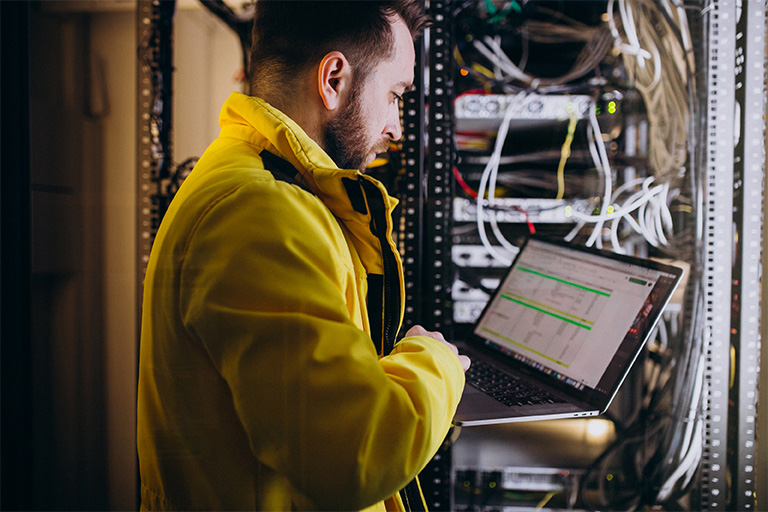All You Need To Know About Local Loop Unbundling

In order to delve deeper into local loop unbundling, it’s important to first understand what local means really is. In simple terms, this is used to refer to the last mile of cable that connects private and public spaces to a wider broadband network. Moreover, the local loop is also known as the subscriber line. This emerged when the internet was first launched and provided by only a handful of broadband providers. But as ISPs grew as a result of greater access to tech and tools, this acted as a great hindrance. As a result, there are now regulations and rules to keep this in check. These are especially important for smaller internet service providers. In this context, local loop unbundling was introduced. Here’s all you know about it.
What Is Local Loop Unbundling?
The local loop unbundling framework helps the last mile of broadband wiring to be shared. As a result, consumers have a larger number of choices along with a more stable and cost-effective network. Here’s what unbundling the local loop means, as regulated by the government.
- The local loop to the customers will still be controlled by the incumbent local exchange carriers or ILEC.
- In order to offer more efficient internet access routes to the consumer, the ILEC will lease the local loop to smaller internet service providers or ISPs.
As a result of easy access to the internet, it’s more common to see internet addiction among a larger number of people.
The Main Types of Unbundling
Now that you’ve figured out what local loop unbundling is, it’s important to understand its various types. These include Shared Access, Full Unbundling, and Bitstream Access. Take a closer look at what this means.
Shared Access
This form of unbundling means that the ILEC maintains control of the copper pairs. In addition to this, they also provide a certain number of services to the subscriber involved. However, it’s important to understand that the ILEC doesn’t typically lease just to a single provider. By enabling access to the same copper pairs, it also allows leases to other ISPs. Various internet types such as fiber optic internet or cable may also be subject to these rules, based on what type of provider they come under.
However, this type of local loop unbundling can also lead to a large number of challenges. These include sluggish digital access speed along with certain technical interface issues. In addition to this, it’s also possible for ILEC’s to slow down other ISP services. This process is known as throttling and it typically affects the speed of the internet connection. As a result, it’s important for service providers to keep a check on access speed to their subscribers.
Suggested Read: What Channel is Newsmax on Cox?
Full Unbundling
Easy access to the internet allows users to enjoy services like Cox internet service. Such packages ensure high-speed internet at cost-effective prices. The term Full unbundling is also sometimes issued to indicate raw copper access. This is because this process enables internet service providers to fully take over copper pairs for the provision of services. Moreover, these services can include both video and voice-related tools for customers.
However, the ILEC still controls aspects like maintenance and ownership of the loop. For most ISPs, this method is preferred over others. However, with this, the ILEC does not have the option to compete for the subscriber anymore. The ISP still has to pay a premium lease rate as charged by the ILEC.
If you want to ensure a stable connection, it’s important to make timely payments using tools like Cox bill pay. This reduced the chances of lag and slow speed.
Read Suggestion: 7 Best Offline Maps Apps to Travel with For Super Easy Navigation
Bitstream Access
With this type of access, the ILEC can take over the local loop and ensure maintenance and control. In addition to this, it can also determine the variety and forms of services. These are the services that the internet service provider can offer the subscriber. Apart from this, Bitstream Access also has the ability to reduce the level of competition between the ISP and the ILEC. Moreover, it also increases the chances of network bridging for a more enhanced experience.
Summing Up
Local loop unbundling has three main types that include full unbundling, bitstream access, and shared access. Moreover, the framework requires the local loop to be controlled by the ILEC.
Suggested Read: How To Fix US/DS Light Blinking on Cox?
Frequently Asked Questions
What is a local loop?
This is the last mile of cable that connects private and public spaces to a wider broadband network.
What are the types of local loop unbundling?
There are three main types that include Bitstream Access, Full unbundling, and Shared Access.
What does Local Lopp unbundling do?
It helps the last mile of broadband wiring to be shared.
Is this useful for customers?
It enables consumers to have a larger number of choices along with a more stable and cost-effective network.
Disclaimer: To our knowledge, we have made all the required efforts towards obtaining owner/publisher approval for the use of images in VISIONECLICK.COM blog posts. However, if you find violations of any sorts regarding any image, please feel free to contact us. Prices and packages mentioned may vary with time and the specific locations.